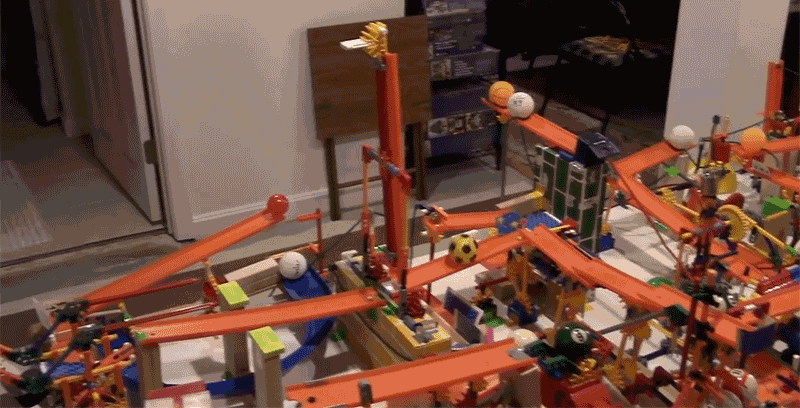Community, Leadership, Experimentation, Diversity, & Education
Pittsburgh Arts, Regional Theatre, New Work, Producing, Copyright, Labor Unions,
New Products, Coping Skills, J-O-Bs...
Theatre industry news, University & School of Drama Announcements, plus occasional course support for
Carnegie Mellon School of Drama Faculty, Staff, Students, and Alumni.
CMU School of Drama
Tuesday, September 19, 2017
It Took 297 Agonizing Tries For This Complex Rube Goldberg Machine to Work Flawlessly
sploid.gizmodo.com: After losing a bet, YouTube’s jackofallspades98 spent four months building one of the most complicated Rube Goldberg machines I’ve ever seen. Spread across two tables, it’s so dense and complex that it took 297 attempts before it worked all the way from start to finish.
Subscribe to:
Post Comments (Atom)

3 comments:
This is a really cool piece of engineering, and at the same time an inspiring for creativity and a dark omen of what is to come in the second semester.
In a sense, this gives you perspective on how long things take to make them work, and just how difficult it can be to work hard for something you want to see done. This guy took almost 300 tries to make this machine work - at any point, he could have said 'well, I've failed' and thrown in the towel. But he didn't! He kept going until, on that 297th try, the machine worked all the way, start to finish. It's encouraging to keep in mind when that essay just won't work out, that piece just isn't coming together, that social problem just keeps getting more and more complicated. Keep at it, and eventually it will work itself out - it just might take a few hundred tries.
Also, this gives me a clear hint at what the Rube project next semester is going to entail: hours and hours and days and weeks of diligent work, hundreds - or even thousands - of tries to make the machine flow flawlessly from one step and group to the next. But in the end, with all the hours and effort put in, it WILL work out. It just takes a bit of time, a bit of luck, and a whole lot of patience.
Rube Goldberg machines have always amazed me, and this one was really unbelievable. The amount of patience it took to tweak every inch of this machine over 250 times is unfathomable. I'm interested in the process he went through to decide what materials to use. The use of the plastic Kinex seemed to work seamlessly for him, but I'm curious to see if he considered other materials and what he discovered through trial and error.
This isn’t my favorite Rube Goldberg I’ve seen. It is impressive, especially in terms of how extensive it is, I just tend to like ones that cover a larger surface area, and this one is very compact. Additionally, I tend to like ones that put more emphasis on the theming/ flair/ spectacle of the steps. However, I do find the discussion in the comments on the article itself interesting. First of all, I find it silly to argue whether or not a Rube is a real Rube based on whether or not the final step of the Rube does something sufficiently interesting. That aside, I find it interesting that people who make Rube Goldberg style machines don’t actually call them that due to the copyright on the phrase. It makes sense, but I never would’ve considered that given how embedded in our culture. It reminds me of trademarks that become genericized (like aspirin, or less commonly known ones, like how dry ice, escalator, and trampoline all used to be brand names). I know companies try to prevent their names from going generic, so it would make sense that whoever owns the Rube Goldberg trademark would be fighting its use as a general term.
Post a Comment